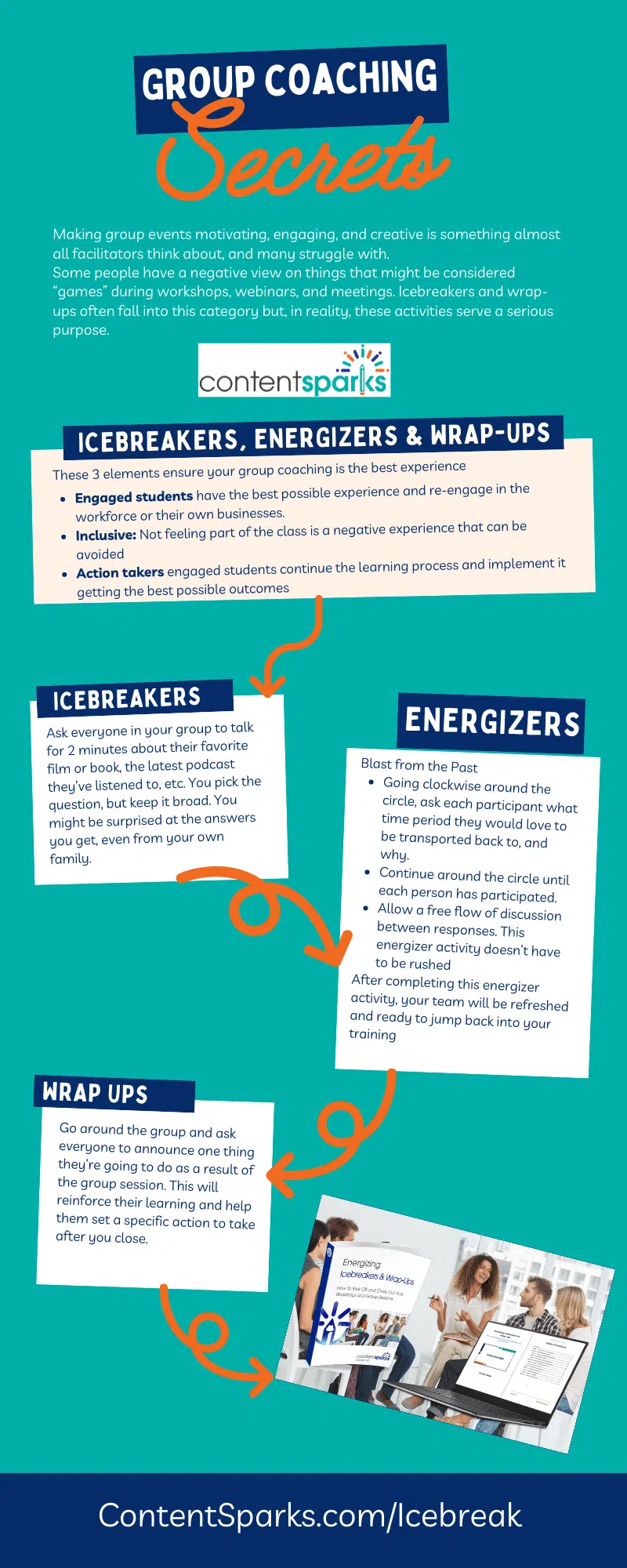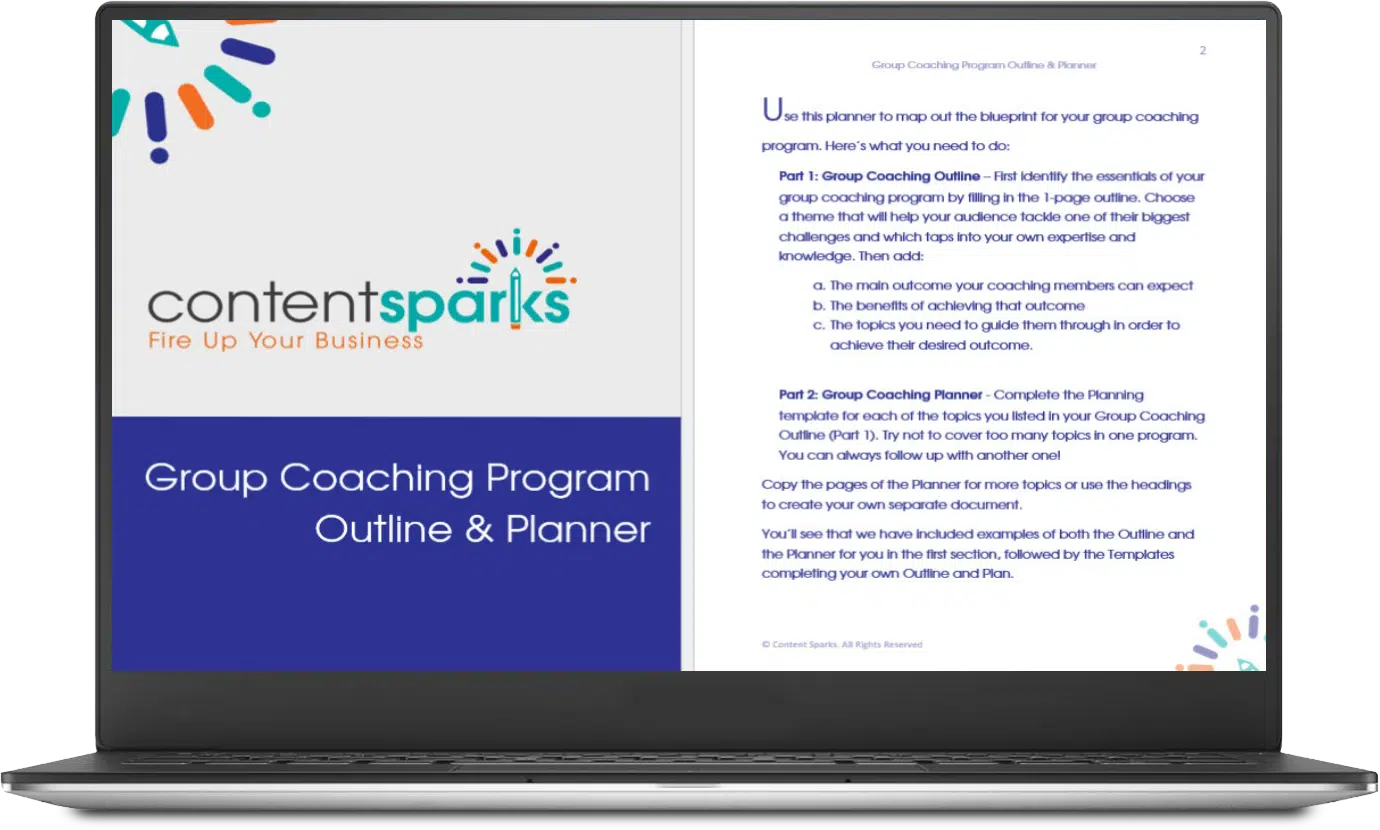Tools & Tactics to Increase Group Coaching Engagement [Free Guide Included]
0 comments
0 comments
Group coaching programs are one of the best ways a coach can scale their business while not sacrificing time – but that does not mean group coaching programs are easy.
Sure, you get to stack your customers and turn five hours one-on-one into one hour spent with the entire group, but then you need to trade in your finely tuned skills for coaching and adapt them to herding a group and keeping engagement running.
Otherwise, you risk clients dropping or the program becoming a flop.
Don’t worry, I’ve got you covered in this guide. Read on for tools and tactics that increase engagement in group coaching sessions to make sure your offer is a success out of the gate!
It’s simple: engaged customers are happy customers, and happy customers can lead to new customers.
Whether you coach businesses or individuals, engagement signals “buy-in” for the concepts you teach. Low or no engagement sends a bad signal about the value you deliver – even if you are honestly delivering something valuable. Engaged students go on to participate more actively, and perform at a higher level. And as a result, they collaborate more effectively with their teams. That means happy customers, glowing testimonials, and referrals.
In other words, that means a successful program that makes more money. If you want a primer on launching a group coaching program, check out my complete guide.
Some group coaching programs can last as long as a year, so make engagement a priority for yours.
There are three simple tools you can use to amp up engagement in your group coaching sessions. I’ve seen successful coaches use the following to power their business on these sorts of programs:

Read on for specific examples of each of these in action.

Group Coaching Program Outline and Planner
Request your free copy of the Group Coaching Program Outline and Planner to help you.
Icebreakers help boost engagement through conversation starters that can prompt your group to open up and share more freely.
I recommend using icebreakers at the beginning of a session to give participants a low-pressure way to connect. For some sample icebreakers, try asking these:
Not only does this get the conversation started, but it opens up an opportunity for each participant to share a bit more about themselves and learn about others.
Depending on the time of day or subject matter for your sessions, you may encounter a lull here and there. Don’t take it to heart – you just need an energizer to wake things up a bit.
Think of energizers as mental reset buttons during sessions. These quick activities help maintain engagement and encourage creative thinking. Some example energizers might include:
Questions like these prompt people to think beyond their current limitations and often lead to inspiring discussions.
Another energizer is the "random connection" exercise, where you present two unrelated concepts (like "coffee" and "leadership") and ask participants to find meaningful connections between them, encouraging lateral thinking and generating fresh perspectives.
The final tool in your belt is wrapups.
Wrap-ups help turn insights into action and create accountability within the group. One effective wrap-up method is the "3-2-1 commitment," where participants share three things they learned, two actions they'll take, and one potential obstacle they'll need to overcome.
Another approach is the "partner pledge," where members pair up and share one specific goal they'll accomplish before the next session, then check in with their partner midweek to provide support and accountability.

Group Coaching Program Outline and Planner
Request your free copy of the Group Coaching Program Outline and Planner to help you.
Even with these energizers in hand, sometimes, you get a gut feeling that engagement may be dropping in your coaching program.
Or maybe you shrug those feelings off as paranoia.
If you’re unsure, here are some tried and true ways to tell if engagement is dropping into a “danger zone” and needs attention:
If you notice the above signs, here’s what you can do (in addition to those three tools I mentioned above).
Consider running anonymous surveys or one-on-one check-ins to understand what's causing the drop in engagement. Participants may have useful insights about the program's pace, content, or group dynamics that you can address.
You might also need to refresh your facilitation techniques.
Try incorporating more interactive elements like breakout sessions, role-playing exercises, or case studies that directly relate to participants' challenges. This helps make the content immediately applicable and engaging. You could also introduce friendly competition or gamification elements to spark motivation.
Consider restructuring your session format to create more opportunities for peer learning and connection. This might mean dedicating more time to participant-led discussions, implementing a "success story" sharing segment, or establishing accountability partnerships. It's also worth examining if your content needs updating. Ensure your material remains relevant and challenging enough for your participants' current skill levels.
Remember: engagement often reflects the perceived value of your program. Be clear about connecting program activities to the goals of your participants to help them see the tangible benefits of their involvement. This can motivate your group to stay engaged and set your program up for success.
As you can see, icebreakers, energizers, and wrap-ups have a big impact on how your group coaching is received.
This is just one piece of the puzzle, though.
For the rest, download my free guide to creating and launching a group coaching program. In this free outline and planner, you’ll get a foundation for a successful program that will propel your business to new heights this year.
Enjoy!

Tags